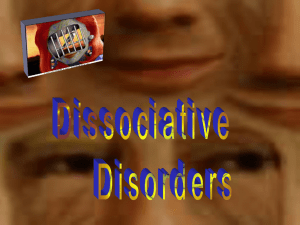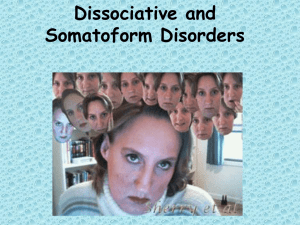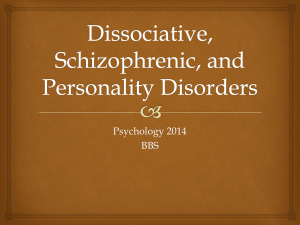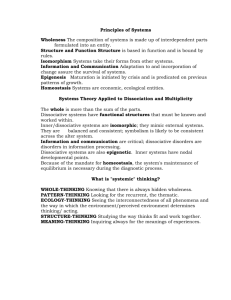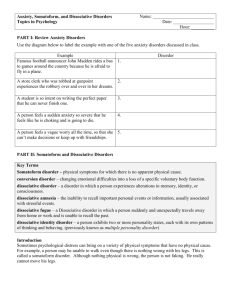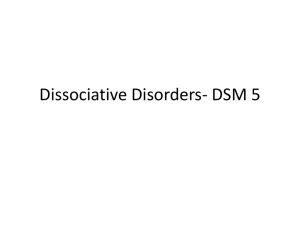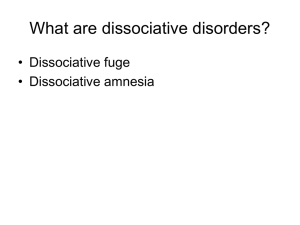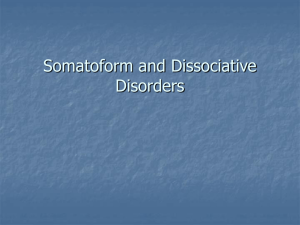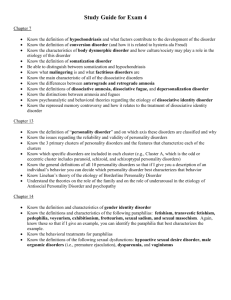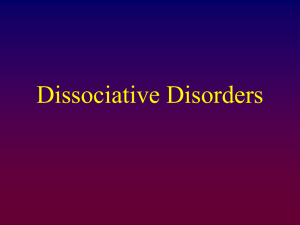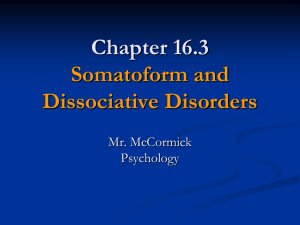Chapter 6: Dissociative & Somatoform Disorders
advertisement
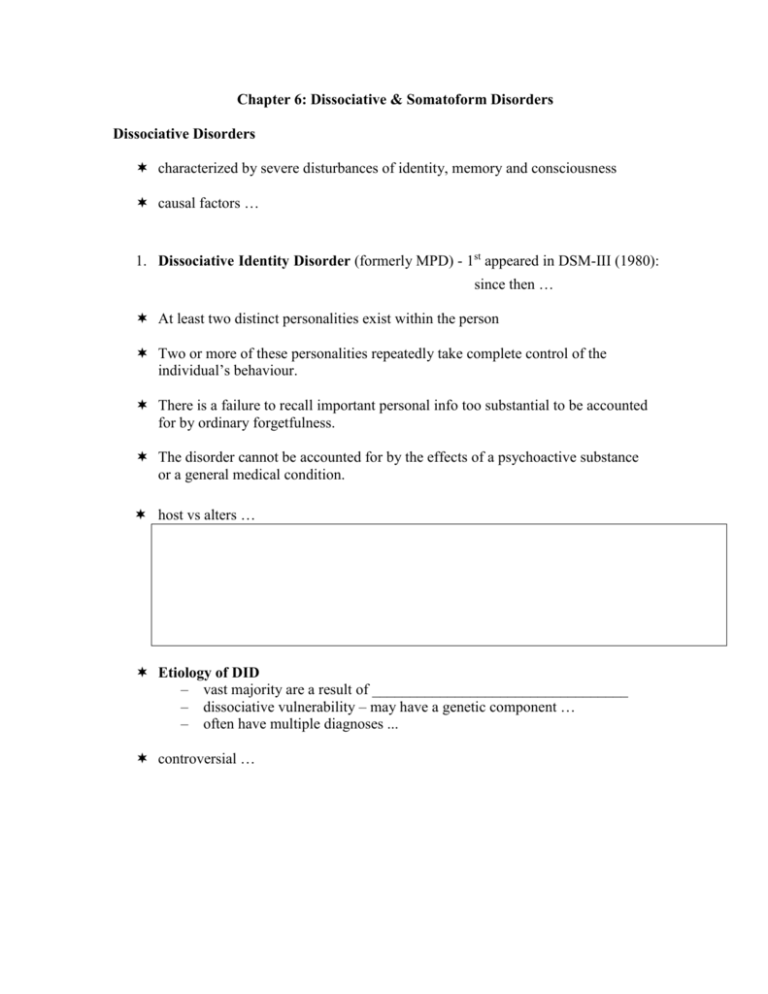
Chapter 6: Dissociative & Somatoform Disorders Dissociative Disorders characterized by severe disturbances of identity, memory and consciousness causal factors … 1. Dissociative Identity Disorder (formerly MPD) - 1st appeared in DSM-III (1980): since then … At least two distinct personalities exist within the person Two or more of these personalities repeatedly take complete control of the individual’s behaviour. There is a failure to recall important personal info too substantial to be accounted for by ordinary forgetfulness. The disorder cannot be accounted for by the effects of a psychoactive substance or a general medical condition. host vs alters … Etiology of DID – vast majority are a result of __________________________________ – dissociative vulnerability – may have a genetic component … – often have multiple diagnoses ... controversial … 2. Dissociative Amnesia real & complete memory loss ... often only personal info is lost … sudden onset … Types: 1. Localized Amnesia 2. Selective Amnesia 3. Continuous Amnesia 4. Systematized Amnesia 5. Generalized Amnesia Repressed Memory Debate – Controversial! – Is it possible to “forget” that a trauma/abuse ever happened? – Is it possible for someone to go into therapy for other psychological symptoms (e.g., anxiety, depression), and through psychotherapy “discover” early abuse? 3. Dissociative Fugue sudden, unexpected flight from home; inability to remember past and who one is duration … typically sudden onset … during fugue state: memory behaviour 4. Depersonalization Disorder feeling of being detached from oneself … sudden onset … impairment in memory loss or identity confusion? … common? for a diagnosis: – – most likely to occur when mild anx or depression … Etiology Abuse, trauma, war Psychodynamic theory Massive use of repression Learning theory Dissociation = learned response that involves not thinking about disturbing acts or thoughts; negative reinforcement Diathesis-stress Model Proneness to fantasize, highly hypnotizable … = diathesis Abuse, trauma, warfare = stress Treatment DID Depersonalization Disorder Somatoform Disorders characterized by phys symptoms for which there is no phys cause often difficult to differentiate among the various somatoform disorders … comorbidity … somatoform disorders are distinguished from: Malingering … Factitious disorders … most common form = Münchausen syndrome … 1. Conversion Disorder loss or impairment of physical function but no phys cause motor or sensory functioning … examples … la belle indifference some people may be misdiagnosed … 2. Hypochondriasis excessive concern about serious illness … other cues may trigger fears ... comorbidity "doctor-shop” cognitive perspective … 3. Somatization Disorder multiple symptoms … do not have any organic basis key feature … colourful accounts by patients, yet lacking in precise factual info H vs SD …; comorbidity possible SD: H: 4. Body Dysmorphic Disorder • severe preoccupation with defect in appearance in any part of the body Etiology Psychodynamic theory – – Emotions converted into physical symptoms Symptom may be functional Learning theories – Reinforcing properties of the sick role Cog mechanisms – – Interpretation of the meaning & significance of these events (e.g., catastrophize minor bodily sensations) Uncontrollable preoccupation w somatic experiences Behavioural approach – – Reward attempts to assume responsibility & remove sources of reinforcement Stress mgmt … Cognitive restructuring – Avoid catastrophizing … – _______________ for hypochondriasis Formative experiences Treatment Medications

